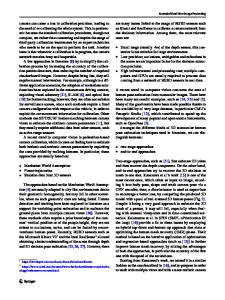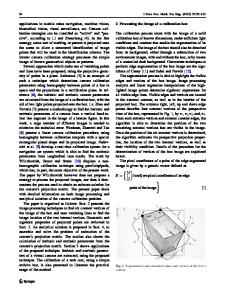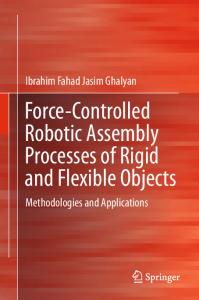Automatic camera calibration by landmarks on rigid objects
- PDF / 3,520,054 Bytes
- 13 Pages / 595.276 x 790.866 pts Page_size
- 25 Downloads / 357 Views
ORIGINAL PAPER
Automatic camera calibration by landmarks on rigid objects Vojtech ˇ Bartl1
· Jakub Španhel ˇ 1 · Petr Dobeš1 · Roman Juránek1 · Adam Herout1
Received: 26 February 2019 / Revised: 24 March 2020 / Accepted: 8 September 2020 © Springer-Verlag GmbH Germany, part of Springer Nature 2020
Abstract This article presents a new method for automatic calibration of surveillance cameras. We are dealing with traffic surveillance, and therefore, the camera is calibrated by observing vehicles; however, other rigid objects can be used instead. The proposed method is using keypoints or landmarks automatically detected on the observed objects by a convolutional neural network. By using fine-grained recognition of the vehicles (calibration objects), and by knowing the 3D positions of the landmarks for the (very limited) set of known objects, the extracted keypoints are used for calibration of the camera, resulting in internal (focal length) and external (rotation, translation) parameters and scene scale of the surveillance camera. We collected a dataset in two parking lots and equipped it with a calibration ground truth by measuring multiple distances in the ground plane. This dataset seems to be more accurate than the existing comparable data (GT calibration error reduced from 4.62 % to 0.99 %). Also, the experiments show that our method overcomes the best existing alternative in terms of accuracy (error reduced from 6.56 % to 4.03 %) and our solution is also more flexible in terms of viewpoint change and other. Keywords Camera calibration · Optimization · Surveillance
1 Introduction Camera calibration is an important step in the majority of machine vision applications. In various surveillance scenarios, calibration including scale (to tell the position in world units, like meters, not in image units) is of high importance. While research works treat camera calibration as a solved problem by showing a checkerboard to the experimental camera, practical applications often require a calibration procedure that is automatized and suitable for large scene scales. There is a large amount of surveillance cameras around the world, and the possibility to calibrate them (in order to be usable in machine vision applications) without the necessity of physical presence is essential. Zhang [65] popularized calibration by inserting a suitable pattern of known properties; in his case, a planar printed checkerboard is used, but arbitrary planar and non-planar [39,66] objects have been used since. However, in surveillance of real-world scenes, especially with large numbers of processed cameras, it is extremely inconvenient to calibrate the cameras by showing
B 1
Vojtˇech Bartl [email protected] Faculty of Information Technology, Centre of Excellence IT4Innovations, Brno University of Technology, Brno, Czech Republic
them markers and by making additional distance measurements in the scene (e.g., in the midst of the traffic lanes of a highway). The goal of our work is to develop fully automatic calibration algorithms for surveil
Data Loading...









